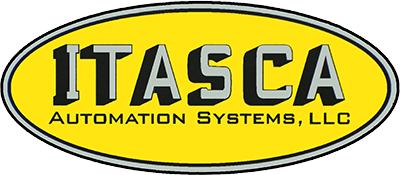Coil winding is a critical process in manufacturing electrical components such as transformers, solenoids, and inductors. It involves winding wire onto a bobbin or core to create a coil with a specific number of turns and desired properties. While the basic principles of coil winding are relatively straightforward, achieving optimal results requires careful attention to detail and the use of advanced techniques.
Understanding the Basics of Coil Winding
Before delving into advanced techniques, it is essential to have a solid understanding of the basic principles of coil winding. This includes selecting the appropriate wire size and type, determining the number of turns required, and ensuring proper tension and alignment during winding. A high-quality winding machine with precise control over speed, tension, and other parameters is also crucial for achieving consistent and reliable results.
When winding a coil, it is important to maintain uniform tension on the wire throughout the process. Uneven tension can lead to gaps or overlaps in the winding, resulting in a coil with uneven properties and potentially impacting its performance. Using a tensioning device or automatic tension control system can help ensure consistent tension and improve the quality of the finished coil.
Choosing the right winding method is another crucial factor in achieving optimal results. Common winding methods include single-layer, multi-layer, and crossover winding. Each method has its own advantages and challenges, and the choice of method will depend on the specific requirements of the coil being wound. Experimenting with different winding methods and adjusting the winding parameters can help optimize the winding process and improve the quality of the finished coil.
Advanced Coil Winding Techniques
In addition to the basic principles of coil winding, several advanced techniques can help improve the quality and efficiency of the winding process. These techniques involve using specialized tools and equipment, as well as implementing best practices for coil winding.
One advanced technique for improving the quality of coil winding is using precision winding heads. Precision winding heads are designed to minimize tension variations and ensure consistent winding results. They feature adjustable tension control, precise wire guidance, and other features that help reduce the risk of wire breakage and improve the overall quality of the winding.
Another advanced technique for optimizing coil winding is the use of computer-controlled winding machines. These machines allow for precise control over winding parameters such as speed, tension, and layering, as well as the ability to program complex winding patterns and automate the winding process. Manufacturers can achieve faster cycle times, higher winding accuracy, and greater consistency in the finished coils by using a computer-controlled winding machine.
Investing in advanced technology and equipment, such as precision winding heads and computer-controlled winding machines, can help manufacturers improve the quality and efficiency of their coil winding operations. While these technologies may require a higher upfront investment, the long-term benefits in terms of improved product quality, reduced waste, and increased productivity can outweigh the initial costs.
Tips for Optimal Coil Winding
In addition to advanced techniques and technology, several tips and best practices can help manufacturers achieve optimal results in coil winding. These tips include:
Properly prepare the winding machine and materials before starting the winding process. This includes ensuring that the bobbin or core is clean and free of debris, the wire is properly tensioned and aligned, and all necessary tools and equipment are in place.
Monitor and adjust winding parameters as needed during the winding process. This includes monitoring tension, speed, layering, and making adjustments to ensure consistent winding results.
Regularly inspect and maintain the winding machine to ensure optimal performance. This includes cleaning and lubricating moving parts, checking for wear and tear, and replacing any damaged or worn components.
Use high-quality materials and wire for coil winding. Using inferior materials can result in coils with poor performance characteristics or reduced lifespan. Investing in high-quality materials can help improve the overall quality and reliability of the finished coils.
Implement quality control measures to ensure the consistency and reliability of the finished coils. This can include testing the coils for electrical properties, visual inspection for defects, and other quality checks to verify that the coils meet the required specifications.
By following these tips and best practices, manufacturers can improve the quality and efficiency of their coil winding operations and achieve optimal results in their finished products.
Contact Itasca Automation Systems Today!
At Itasca Automation Systems, we specialize in designing and manufacturing precision automated machines for the coil winding industry. Our engineers have years of experience developing innovative solutions to meet our customers’ needs. Using modern 3D CAD tools and a lean modular machine design approach, we work closely with our clients to design custom automation systems that optimize their coil winding processes.
If you want to improve the quality and efficiency of your coil winding operations, contact us at Itasca Automation Systems today. Our team of experts can help you leverage advanced coil winding techniques and technology to achieve optimal results in your manufacturing processes. Learn more about our products and services and how we can help take your coil winding operations to the next level.




Comments are closed